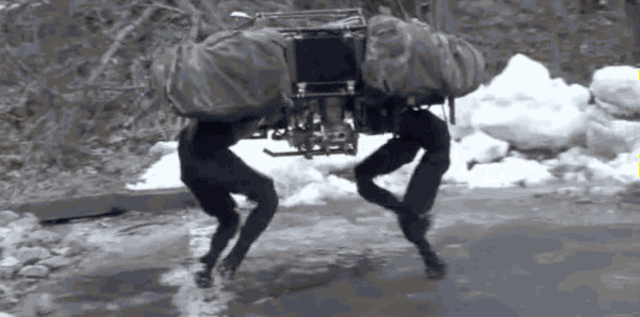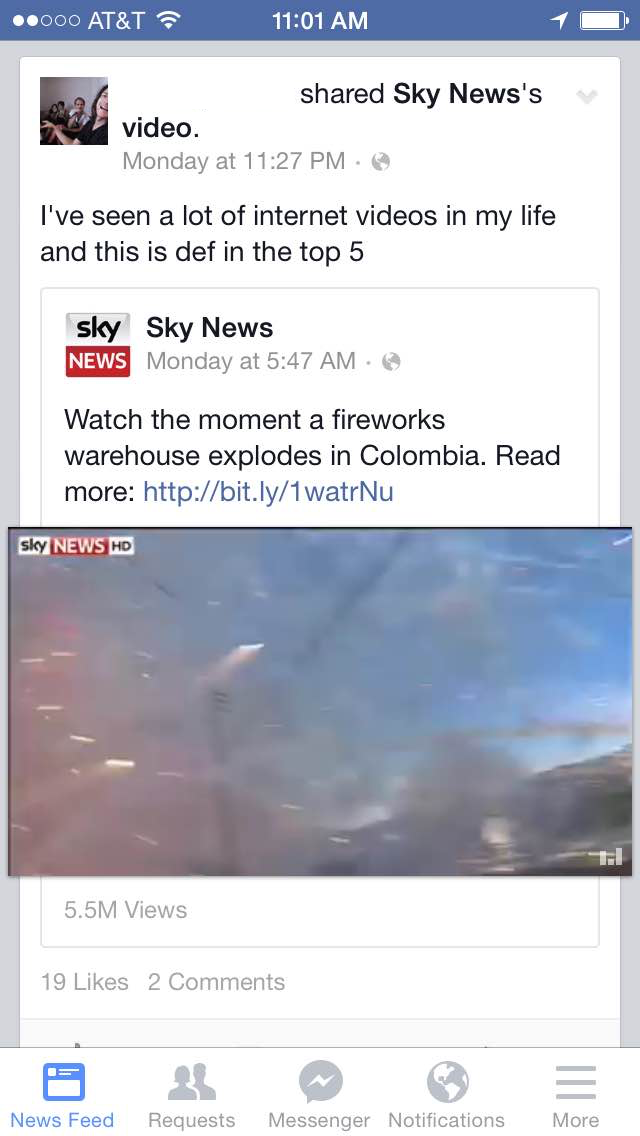Territory Annexed

Here is an update from Facebook about what “the shift to video” — that is, the sudden prevalence of auto-playing clips posted directly to the site — means to “creators.” (These updates are the closest thing to direct guidance from Facebook that many media companies, large and small, have ever received).
It is a straightforward post about how to get your videos noticed, and shared, on Facebook. One thing to keep in mind, for example, is that your video will probably be viewed primarily on phones, where it will play automatically but without sound. You have a couple of silent seconds to capture people as they scroll by. HOWEVER, these videos should also be “raw” and “compelling” and “shareable” — videos that “no one else will have.”
Videos such as this one:
Post by Taylor Swift.

This post is titled “What the Shift to Video Means for Creators” but describes no such thing. What the shift to Facebook video means is that Facebook is more interested in hosting the things media companies make than just spreading them, that it views links to outside pages as a problem to be solved, and that it sees Facebook-hosted video as an example of the solution. A company that uploads its videos to Facebook is not the publisher of those videos. At best, it produced them.
This is where the theoretical tension between Facebook, which has been lavishing websites with traffic in return for their ability to fill its News Feeds with interesting links, and publishers, which have either accepted or pursued the audience that Facebook occasionally shares with them, becomes material. Embedded videos didn’t used to play on Facebook — you had to leave the page to visit the site that published (or embedded) them in the first place. Next, embedded YouTube videos were allowed entrance, proved popular, and made the old style of video-watching seem strange and inefficient, while still depending on, and benefiting, an outside publisher (Google, with its partners). When Facebook privileged its own videos to auto-play, it made embedded videos feel out-of-place. Facebook-native videos, which display their view counts inside the frame, are often shockingly popular, even by YouTube standards. This is the last stage in a gradual correction.
“What the Shift to Video Means,” then, is that one major type of media is being pulled in-house by Facebook; it means that Facebook is not satisfied merely facilitating the spread of other publishers’ products. It’s not that such an arrangement is unprofitable — Facebook has made a great deal of money selling ads against links to media originally published elsewhere — it’s that the new vision, in which Facebook is not just theoretically but practically constitutes the entire internet, is potentially more profitable. Publishers, in Facebook’s view, are middlemen.

“What the Shift to Video Means,” additionally, is that Facebook has been successful in its first major attempt to requisition the media that it has up until this point partnered with. It could, and probably plans to, become a new YouTube not just for video but for text and audio and whatever else (it already did this with games!). All the things we link to on Facebook now, Facebook could conceivably host.
“What the Shift to Video Means,” narrowly and less importantly but still sort of interestingly, is that the web rubrics for Facebook content will no longer be necessary — the headlines that were once designed to convince you to click and leave Facebook for a few seconds will now be responsible only for convincing you to look at the thing immediately below (if there are traditional headlines at all).
“What the Shift to Video Means,” theoretically, is that much of the benefit publishers have derived from Facebook over the last three years, which required only occasional and modest adherence to Facebook’s explicit and implicit guidance, will disappear for organizations that are not interested in ceasing to be publishers to become “creators,” or in replicating their operations on another company’s platform just because it’s the momentarily dominant channel on hundreds of millions of new machines with poorly understood potential.
“What the Shift to Video Means,” finally, is that the grand Facebook anomaly that incidentally inflated thousands of websites, some so profoundly as to distort their entire businesses and missions, may be coming to an end.

The language of the announcements doesn’t disagree, at least. From today’s post:
The most important thing to remember when creating video for Facebook is that it will be a part of News Feed. As a creator, you should be conscious that people will discover your video in News Feed next to a photo from a friend or a status update from a relative. Your video needs to fit in, and it needs to be something that your audience will want to watch and share.
This is a concise and honest assessment of what you do when you attempt to “promote” anything on Facebook: You are entering it into a direct contest — for attention and action — with everything else that people post to Facebook. This advice, and the advice that follows, is addressed to creators. Now, here is a post from December:
Over the past few months, we’ve listened to publishers around the world to better understand how we can help them connect with people on Facebook. As a result, we’ve created new tools for media publishers, made improvements to Insights, and have added more resources and communication channels for publishers.
The words “publish” and “publisher” do not appear once in the January post; the word “creator” is not used in the December post. Was there a meeting? Maybe! Do a number of people see these posts, looking out for such things, before they are… published? Almost certainly.
The mystery here for organizations amenable to a Facebook-centric existence is how they’ll make money. So far we have a mysterious and unannounced revenue-sharing plan and sponsored content. The worry with the former is obvious and familiar and old; the worry with the latter is that outside sponsored content is no different in Facebook’s eyes than, say, outside video. That it would represent an inefficiency, and one more problem to solve.
